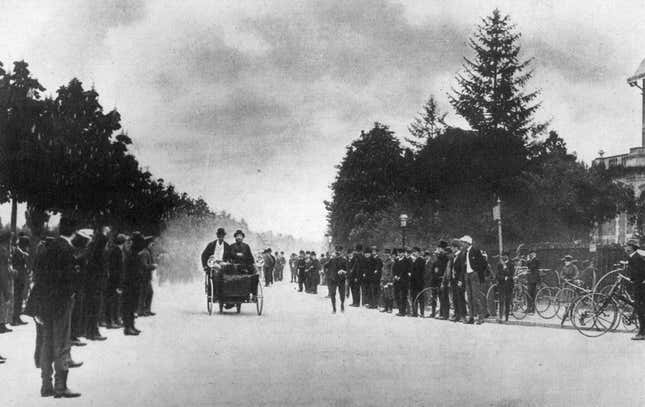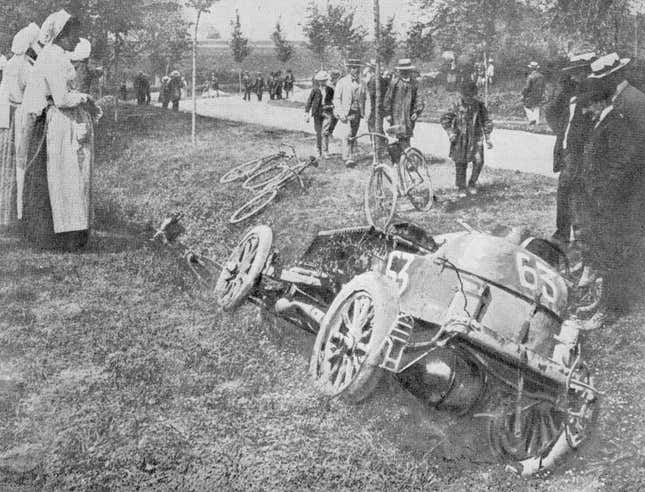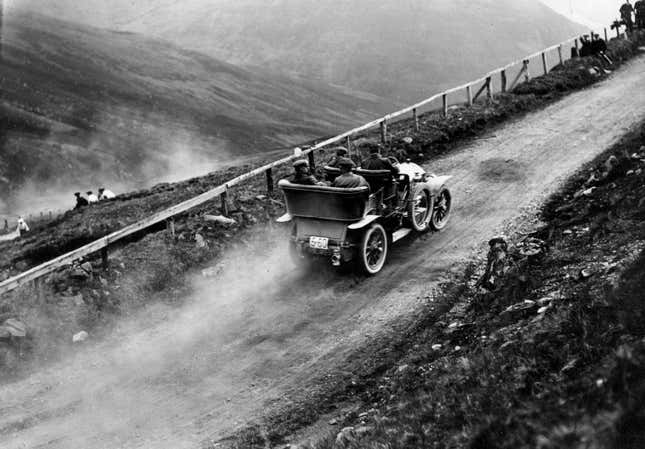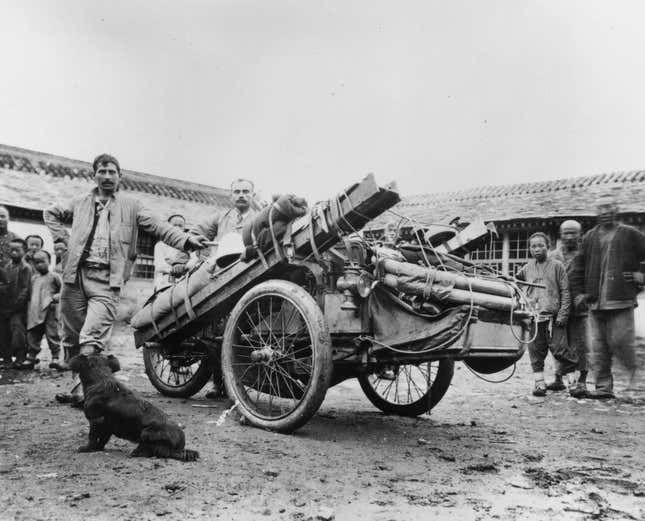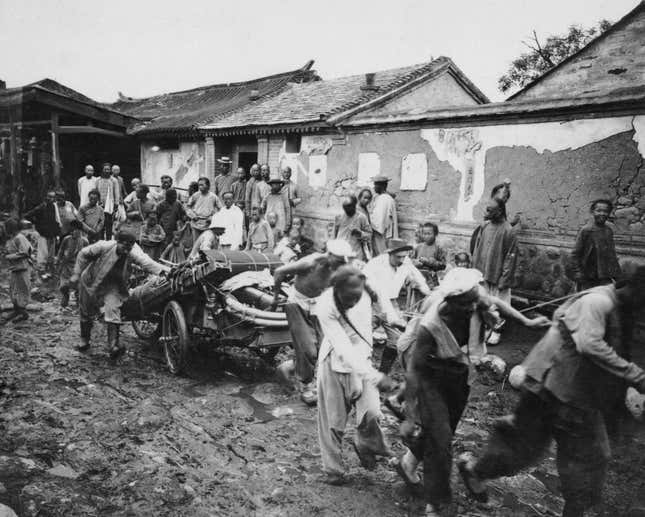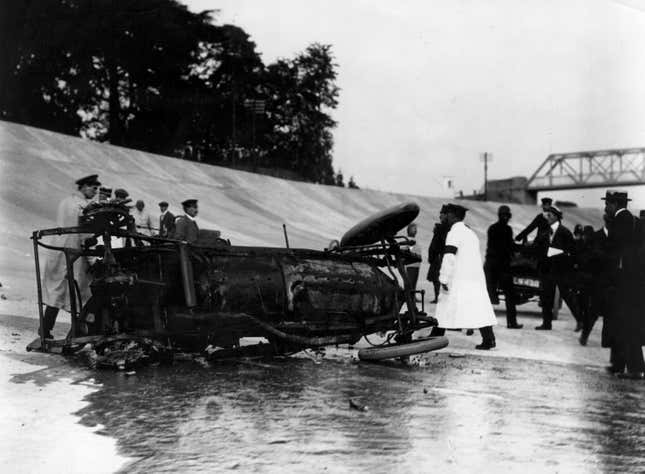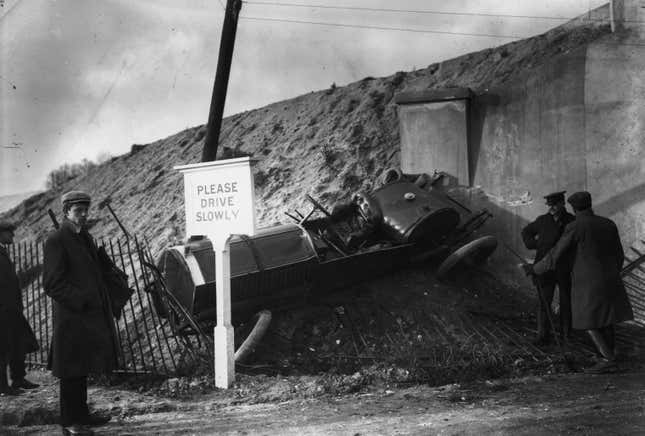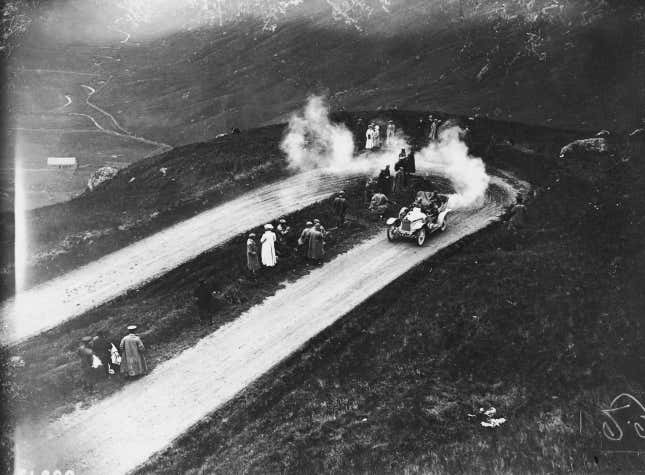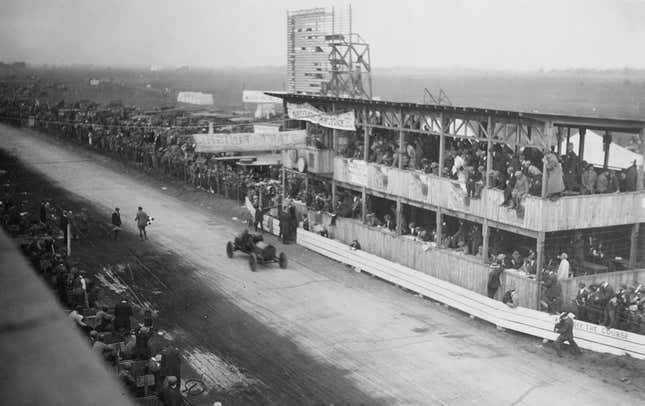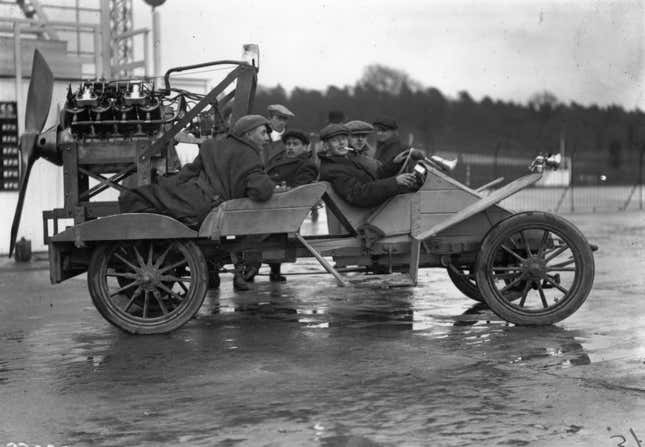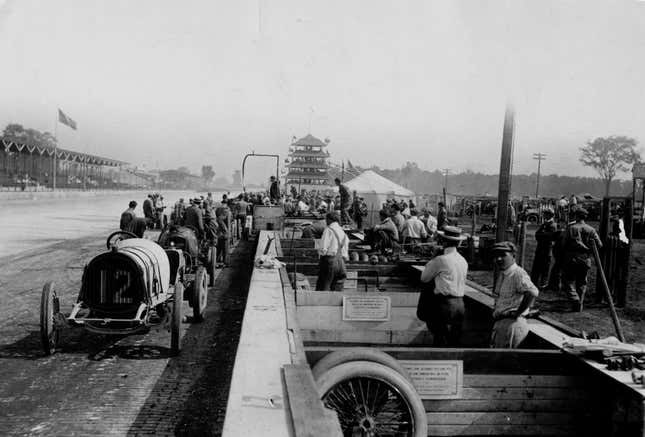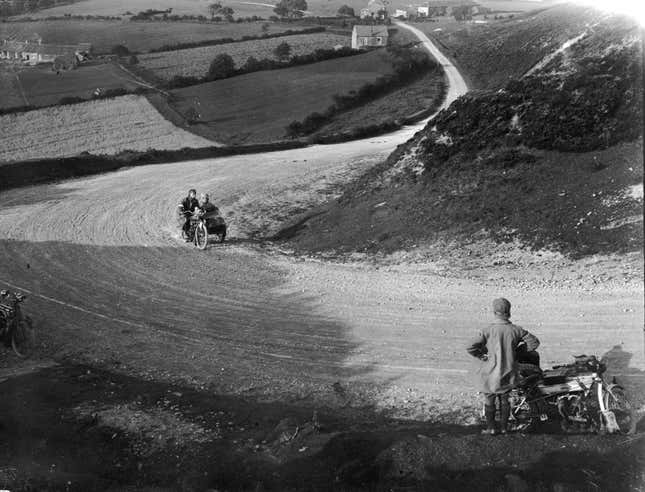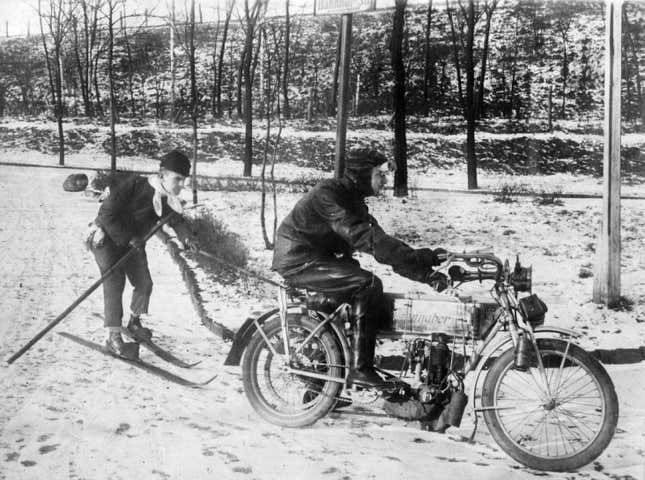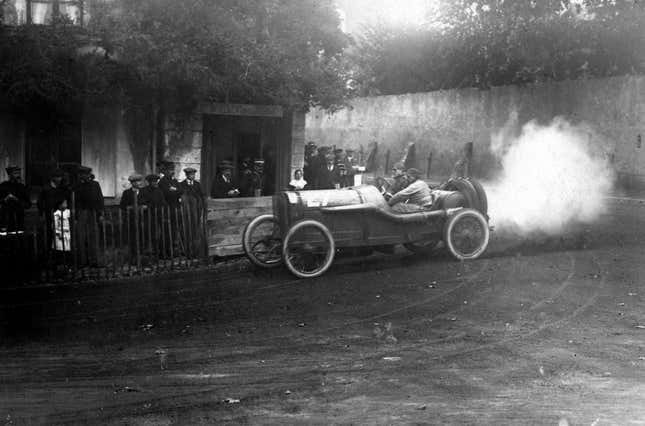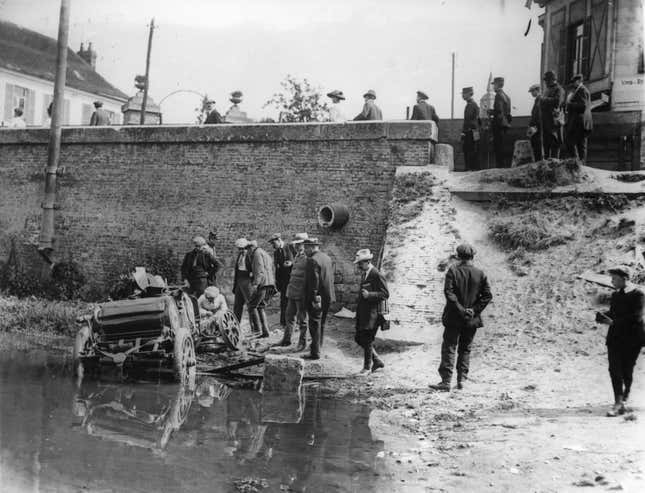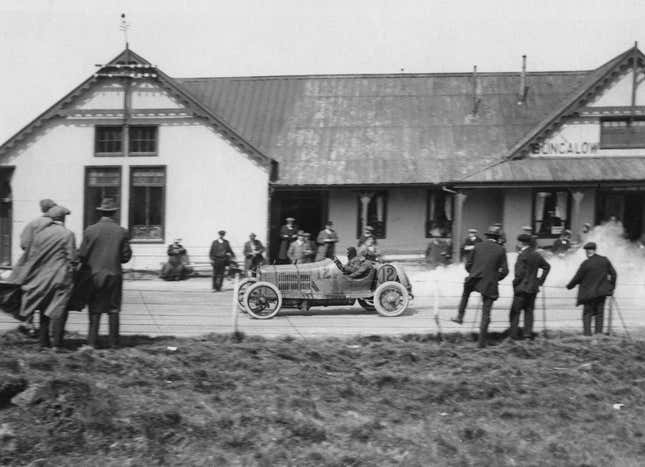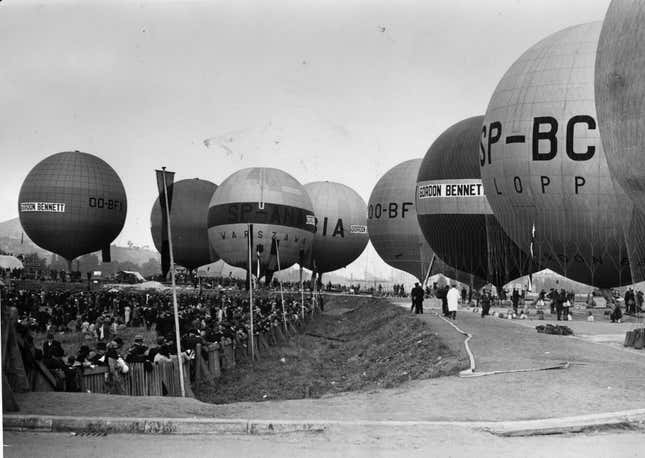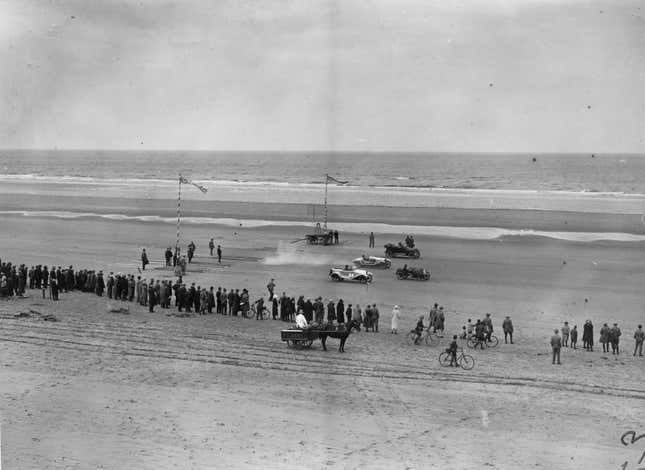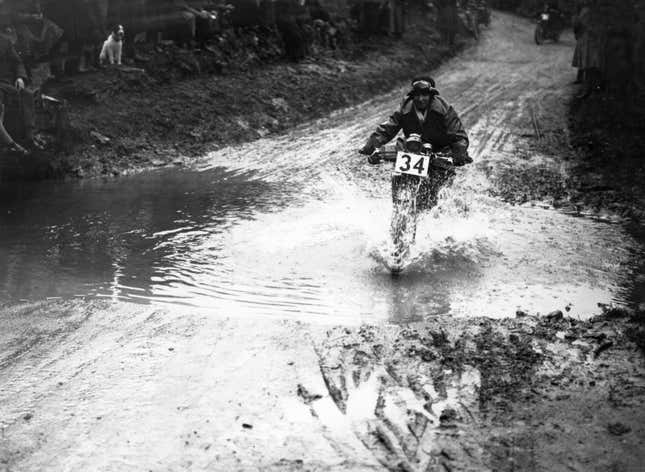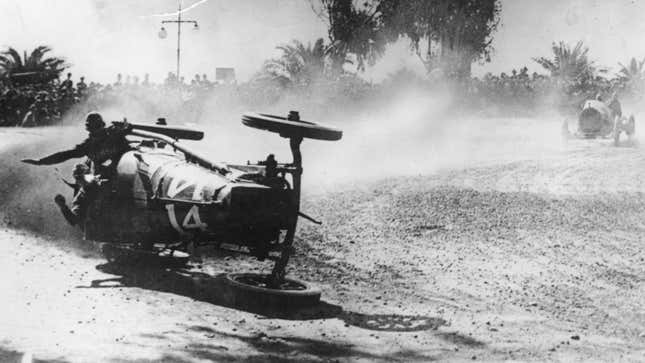
Motorsport has been dangerous since its very start, but I think we can forget exactly how wild it was back before we had safety devices like seatbelts or pedestrian safety fences that were more robust than a piece of rope. I’ve been absolutely obsessed with reading about the origins of racing lately, and this morning, I found myself deep in the photo archives in an attempt to put an image to the chaos I’ve consumed. Folks, it’s much wilder than I ever imagined.
Today, I’ve put together a collection of some of the most ridiculous motorsport images I could find that date back to the pre-1920s. This selection of images might be small when you consider how much changed in the three-ish decades of motorsport I’m running through — but it’s also wild to see how much didn’t evolve. Get ready for a wild ride.
